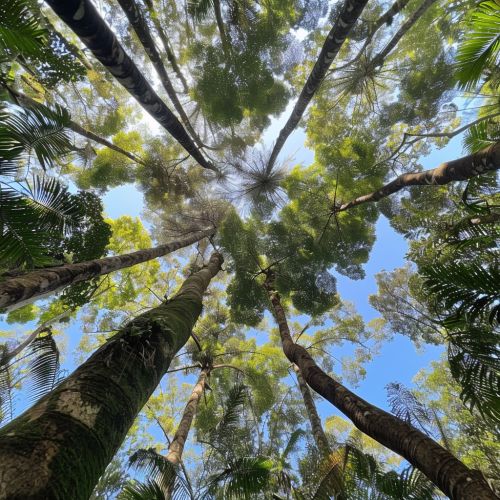Canopy layers
Introduction
The concept of canopy layers pertains to the vertical stratification of vegetation in a forest ecosystem. This stratification is crucial for understanding the ecological dynamics, biodiversity, and various biological processes within forested areas. Canopy layers are typically divided into distinct strata, each with unique characteristics and functions. These layers include the emergent layer, the canopy layer, the understory layer, and the forest floor. Each layer supports different species and plays a significant role in the overall health and functionality of the forest ecosystem.
Emergent Layer
The emergent layer is the uppermost stratum of the forest, characterized by towering trees that rise above the general canopy level. These trees, often reaching heights of 50 to 70 meters, are exposed to direct sunlight and are subject to strong winds. Species found in this layer are adapted to withstand these conditions and often have thick, sturdy trunks and deep root systems. The emergent layer is crucial for certain bird species, such as eagles and parrots, which use the high vantage points for nesting and hunting.


Canopy Layer
The canopy layer forms a dense, continuous cover of foliage that intercepts most of the sunlight. This layer is home to a diverse array of plant and animal species. Trees in the canopy layer typically have broad, flat leaves designed to capture sunlight efficiently. The canopy is a critical habitat for many arboreal species, including monkeys, sloths, and a variety of insects. The dense foliage also plays a significant role in regulating the microclimate of the forest, influencing temperature and humidity levels.
Understory Layer
Beneath the canopy lies the understory layer, which receives limited sunlight due to the dense foliage above. This layer consists of smaller trees, shrubs, and saplings that are adapted to low-light conditions. Plants in the understory often have large leaves to maximize photosynthesis. The understory provides habitat for a range of species, including insects, birds, and small mammals. It also serves as a crucial area for the regeneration of the forest, as young trees and plants grow and eventually replace older ones in the canopy.
Forest Floor
The forest floor is the lowest layer of the forest, covered with decomposing leaves, fallen branches, and other organic matter. This layer is rich in nutrients and is home to a variety of decomposers, such as fungi, bacteria, and invertebrates, which play a vital role in breaking down organic material and recycling nutrients back into the ecosystem. The forest floor also supports ground-dwelling animals, including insects, reptiles, and small mammals. The nutrient-rich soil is essential for the growth of plants and the overall health of the forest.
Ecological Significance
The stratification of canopy layers is fundamental to the ecological balance of forest ecosystems. Each layer provides unique habitats and resources, supporting a diverse range of species. The vertical structure of the forest allows for efficient use of sunlight, water, and nutrients, promoting biodiversity and resilience. Canopy layers also play a crucial role in carbon sequestration, helping to mitigate climate change by absorbing carbon dioxide from the atmosphere.
Human Impact and Conservation
Human activities, such as deforestation, logging, and land conversion, have significant impacts on canopy layers and forest ecosystems. The removal of trees disrupts the vertical structure, leading to habitat loss, reduced biodiversity, and altered microclimates. Conservation efforts are essential to protect and restore forest ecosystems. Strategies include sustainable forestry practices, reforestation, and the establishment of protected areas. Understanding the importance of canopy layers is crucial for developing effective conservation policies and promoting the long-term health of forest ecosystems.
